

Howard Scott Warshaw interview
By Scott Stilphen
(1997)
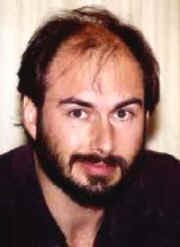
Ever heard the saying, “jack of all trades, master of none”? Well, Howard Scott Warshaw is on his way to proving that wrong! He also may very well be the only 2600 programmer that can claim to have every one of his games sell over a million copies each. Today he can be found at his own company, Scott West Productions, putting his “million-dollar” talent to good use by making documentaries. I had the opportunity
to ask him my usual ‘million-and-one’ questions, and his answers will no doubt inform and entertain you. Enjoy!
Q: What’s your educational background?
Howard Scott Warshaw: I went to Tulane University, and finished my Bachelor’s Degree within 3 years, with a double major in Math and Economics. I graduated Phi Beta Kappa, and received a scholarship towards a 1-year Masters program, and got my Master’s Degree in Computer Engineering. From there I went to work at Hewlett-Packard.
Q: What did you do there?
Howard Scott Warshaw: I was there for about a year, as a multi-terminal systems engineer, which was very boring work. I learned of an opening at Atari through a friend, applied, and got the position, starting in January of 1981.
Q: So you got in right when the company was taking off…
Howard Scott Warshaw: Yes. Activision had already formed.
Q: What type of equipment was used to program the games on?
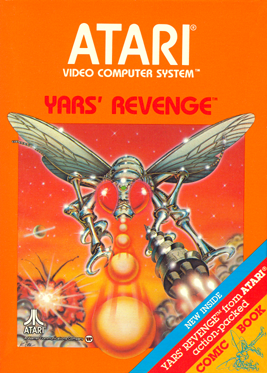 Howard Scott Warshaw: We used a VAX system to compile/assemble, and then downloaded the code to
an emulator box for execution, patching, and debugging. I was given the system’s manual and, after learning it, was assigned to do my first game – a version of Cinematronic’s Star Castle. I soon realized that a decent version couldn’t be done, so I took what I thought were the top logical and geometric components of Star Castle and reorganized them in a way that would better suit the machine. This eventually became Yars’ Revenge.
Howard Scott Warshaw: We used a VAX system to compile/assemble, and then downloaded the code to
an emulator box for execution, patching, and debugging. I was given the system’s manual and, after learning it, was assigned to do my first game – a version of Cinematronic’s Star Castle. I soon realized that a decent version couldn’t be done, so I took what I thought were the top logical and geometric components of Star Castle and reorganized them in a way that would better suit the machine. This eventually became Yars’ Revenge.
Q: What’s the story behind the name?
Howard Scott Warshaw: The working title was originally Time Freeze. I wanted an action game with a lot of colors and sounds – something I would enjoy playing. The concept was, at some point, time would “freeze” and there would be a countdown to a gigantic explosion. One of the things I wanted to do was have the first full-screen
explosion.
There’s an interesting story of how Yars became Yars. Marketing had sent down some names for it – all of which were really terrible. So I asked if I could submit a name, and came up with Yars’ Revenge. I even included a whole storyline to support it, which was later used for the comic book.
Now, Yar is Ray spelled backwards, and the game’s story takes place in the Razak solar system, which (backwards) is similar to Kassar, and that stood for Ray Kassar, Atari’s CEO. Once th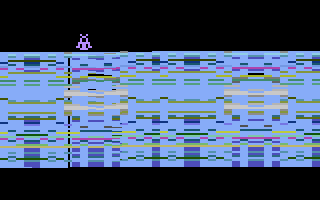 e name was under consideration, I “leaked” this secret to a friend of mine in Marketing and
Product Management, adding that Ray found out about the name and liked it! I knew that no one in Marketing would ask Ray about it, and if they knew he liked it then they would use it, which is exactly what happened!
e name was under consideration, I “leaked” this secret to a friend of mine in Marketing and
Product Management, adding that Ray found out about the name and liked it! I knew that no one in Marketing would ask Ray about it, and if they knew he liked it then they would use it, which is exactly what happened!
But there was one person, Steve Wright, who actually tried to kill off Yars. He hated the game, and kept insisting there was something wrong with it. He eventually sent it to be play-tested. This is where groups of people would play it, along with another game, and then judge them on a score from 1 to 5 (5 being the best). Well, the game it was pitted against was Missile Command, which was THE game at the time. It was a very good translation, and on top of that had name-recognition. I thought for sure that was it. I was able to see the scores as they came in, and the first couple were around 3.5 – not good! As it turned out, Yars ended up testing with an average of 4.5, rating it as one of the highest play-tests Atari ever did.
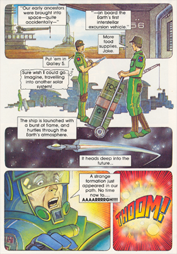 Q: It became the game everyone had to have. The pack-in comic was a great idea, offering this whole detailed background about
the game.
Q: It became the game everyone had to have. The pack-in comic was a great idea, offering this whole detailed background about
the game.
Howard Scott Warshaw: The main idea was to add to the story. Although I wrote the story to the comic book, I was only credited with the game design. Atari felt some of the credit should be “spread around”. I planned to do a whole series of Yars games and comics… but then I got involved with the movie and TV show-related games and never got back to it. There was even talk about making a coin-op version, which would have been a real first…
Q: From home to arcade!
Howard Scott Warshaw: Many of the guys over in the coin-op division liked it. Being only a 4K game, there would have been the room to add ideas, such as the Destroyer missile splitting up and coming after you, I otherwise couldn’t include. David Theurer approached me about doing it, and I offered any help or suggestions I could add, but it never materialized.
Q: That’s one collaboration I would’ve liked to see. It must have been cool to see other programmers playing it.
Howard Scott Warshaw: It really was! You knew then you had something good. We all played each other’s games, and helped out. I’m quite proud of the fact that Yars was the biggest-selling “original” game Atari ever did. With every game I made, I always tried to do something no one had ever done.
Q: Pushing the envelope…
Howard Scott Warshaw: Not in a technical aspect as much as how people viewed video games. Bob Polaro had a theory he called the “factor”. You knew a game had the factor if the first thing players did after a game was to
immediately restart a new game. And that was one thing I did with Yars; it was the 1st game that allowed you to start by pressing the joystick button (Ed.:
Dragster was the first to offer that feature in July 1980, with Maze
Craze 2 months later). As a player, I didn’t want to have to relate to the console, only the controller. There were certain programming standards that were followed, and I realized you didn’t have to use the reset switch to start the game.
Another thing was the Yars “death”. Nobody had really done death animation before
(Ed.: Several VCS games had death animation prior to this, starting with
Combat and Space War, and later with Asteroids, Space Invaders, and
Pac-Man). A lot of work went into the sounds as well.
Q: That ominous hum!
Howard Scott Warshaw: I recreated that sound from those old horror movies where they have a lab with the two electrodes, and the arc of electricity is climbing up them (Ed.: A Jacob’s ladder) – it’s a great sound. The game’s sounds were even used in the movie, Airplane 2, where there’s a scene of a little kid getting a tour of the control room. They’re playing a video game, using the sounds from Yars.
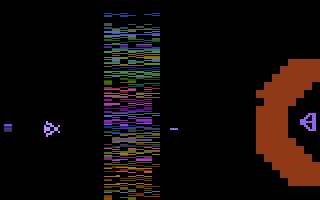
Q: The Neutral Zone was a neat effect too.
Howard Scott Warshaw: Do you know what that is? Here’s a great piece of trivia! It’s the actual program code, laid out vertically, and counter-scrolling over each other. I almost had a problem with Atari over it, because they felt it was a copyright violation to show the code on the screen. But I explained to them that first, besides the scrolling, there was some X-Y and random color processing being done to it, and second, if somebody could get the code from that, then they deserved it!
Q: That’s got to be a first! I’ve never heard of anyone dong that. Was it something you stumbled upon?
Howard Scott Warshaw: No, I planned it. It was just a cheap way to get the effect I wanted. I didn’t have the time or space to do it any other way.
Q: Did you have any input with the commercials or any of the game’s promotion?
Howard Scott Warshaw: No. I felt the game could have been marketed better. In play-testing, Atari found that the game was popular with women, which was quite surprising. Until then, they really couldn’t figure out what type of games women liked, and they wanted to tap into that market. So I said, “Here it is! This is exactly what you wanted.” I mean, here was a game popular with adult women, and the advertising done was targeted at 5-7 year olds. Marketing felt it was impossible for an action game to appeal to women.
Q: But that’s still true today. Nobody knows what appeals to women players. What is it they saw in Yars?
Howard Scott Warshaw: I think one of the things women like in a game is what I call the “oral” aspect – games like Pac-Man and Yars, where you can eat the shield away. But they couldn’t get past the stereotype that women didn’t like video games.
Q: What was the point of Atari investing time and money doing all that research and focus group testing if they ultimately ignored their own results?
Howard Scott Warshaw: I don't know what the point was, but I can tell you that after Yars, I never heard of any consumer testing of games anymore. It was just about releasing licensed properties as close to schedule as possible. Originally, it was up to engineering whether or not to release a game. The criteria was it had to be fun according to the game makers. I think that made sense. A marketing-driven company can't allow that. This is the price of marketing inversion.
Q: That's interesting. I didn't realize Atari stopped doing consumer testing after Yars. That certainly helps explain how Pac-Man made it to market. But then again, it was Pac-Man. I suspect Atari would have released it even if it was even worse (if that's even possible). Was there any talk of doing a Yars sequel?
Howard Scott Warshaw: I actually had designs for a Yars series. The next game was going to be Yarian Olympics, which was a game that Yars had to participate in that would develop the skills that they would need to be able to go up against the Qotile. I was already under development to do them when I got pulled off to do Raiders of the Lost Ark and E.T.
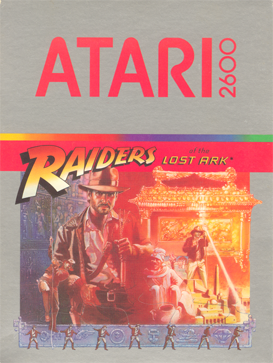 Q: How did the deal with Raiders come about?
Q: How did the deal with Raiders come about?
Howard Scott Warshaw: Atari was looking for someone to do a game based on Raiders of the Lost Ark and so I volunteered. I was flown to Warner Brothers Studios and got to meet with Steven Spielberg! Upon his approval, I decided to do a game similar to Adventure, but with more sounds, colors, and puzzles – the biggest adventure game ever! Adventure was a cool game at the time, for what Warren Robinett had to work with, which was only 4K. I wanted people to say, “Wow! This is truly the next step from Adventure.”
Q: It’s cool in that there’s no one way to solve it. Atari must have been jammed with calls and letters for information!
Howard Scott Warshaw: It was a good sign because that meant people were playing it. That’s what led to the hints and solution being published. I wanted to include short cuts so that the game could be solved a number of ways. It was also a game that you could ultimately win, instead of the standard “game over” bit. You got something like 4 points just for turning it on! The one thing I didn’t want was hi-rez graphics. With the 2600, you always had a choice to go either with 1-line or 2-line graphics resolution, and by choosing 2-line rez I sacrificed better graphics for the game’s overall size. I always felt that using 1-line rez or bit-mapped graphics to get a pretty picture was a waste of memory, so I looked for ways of tweaking the machine to get graphics. There were a lot of techniques I introduced with Raiders. There’s a well-known company memo of mine (Ed.: The infamous “Ball and Stella” memo) explaining how to use the ball register as an animation, as opposed to a dot. The Tsetse flies are one example. This frees up the player registers for more animation; the branch is actually a player register used in a strange way.
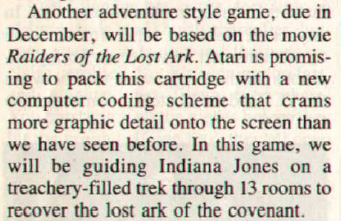
Article in the Spring 1983 issue of Creative Computing Video & Arcade Games (pg. 33).
Q: It’s amazing how many elements from the movie you effectively used. I always thought the snake slithering down the screen was a cool animation.
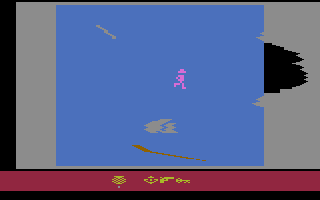 Howard Scott Warshaw: That’s probably the only game with a snake
that holds its position on the screen while growing at one and shrinking at the other. That was another offshoot of my technique of using the ball. The only thing I regret about Raiders was incorporating the use of 2 joysticks. It made it harder to play, but I really couldn’t figure out how else to control both the inventory and motion.
Howard Scott Warshaw: That’s probably the only game with a snake
that holds its position on the screen while growing at one and shrinking at the other. That was another offshoot of my technique of using the ball. The only thing I regret about Raiders was incorporating the use of 2 joysticks. It made it harder to play, but I really couldn’t figure out how else to control both the inventory and motion.
Q: Some programmers made use of the console switches, but to me that seems even more cumbersome.
Howard Scott Warshaw: Definitely. I ruled that out completely. Some tasks are difficult, such as getting a parachute after uncovering the Yar, but then again you need a few tough puzzles to trip players up. That’s what an adventure game is – it can’t be too easy! The one thing in designing an adventure game is that you never know what it’s like to play it. It’s a different experience, as opposed to designing an action game. Overall, I was very pleased with it. The only thing I would’ve liked to put in Raiders was a way you could start where you left off, but I couldn’t work it out.
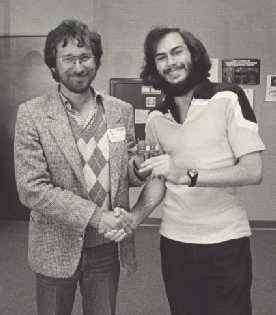
Howard and Steven Spielberg holding a prototype of Raiders of the Lost Ark. Photo courtesy of Dave Staugas.
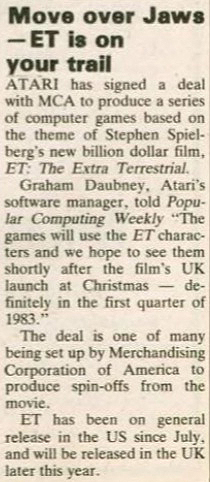
News blurb in the 9-23-82 issue of
Popular Computing Weekly (page 5).
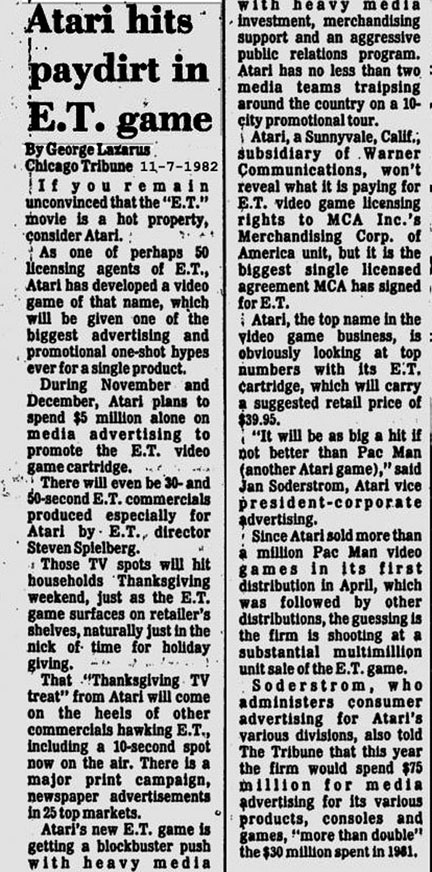
An article from the Chicago Tribune, dated 11-7-1982, stated Atari planned to spend $5 million advertising the game,
with Atari's VP of Corporate Advertising, Jan Soderstrom, proclaiming E.T. "Will be as big a hit if not better than Pac-Man."
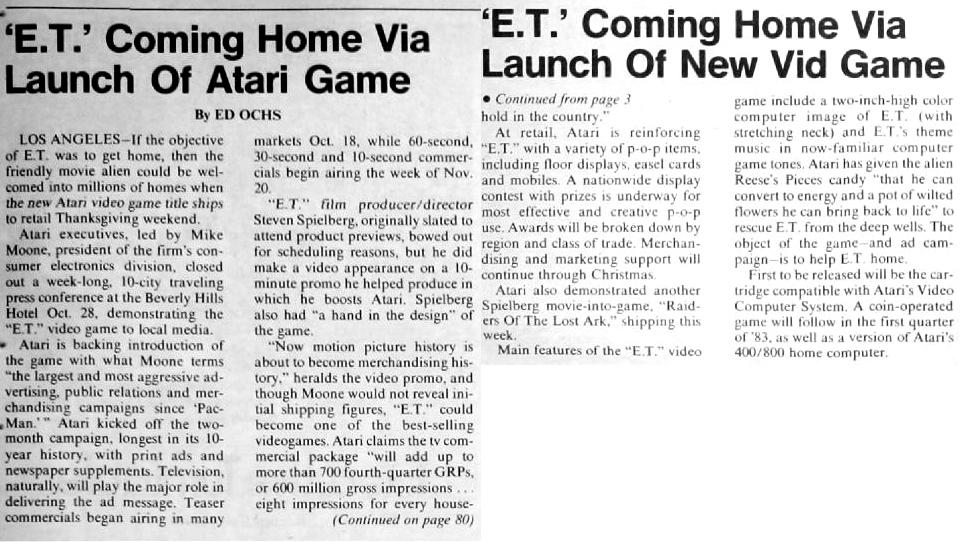
Article in the November 13th, 1982 issue of Billboard magazine (pg. 3).
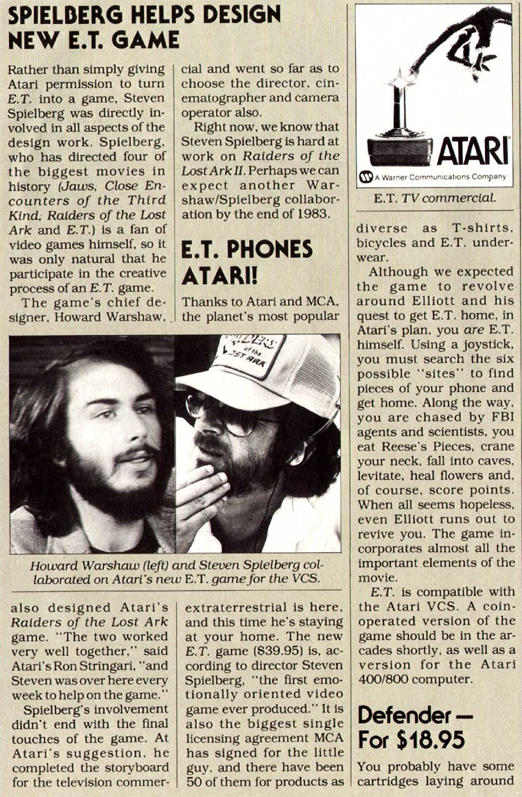
Article in the January 1983 issue of Electronic Fun with Computers & Games (pg. 35).
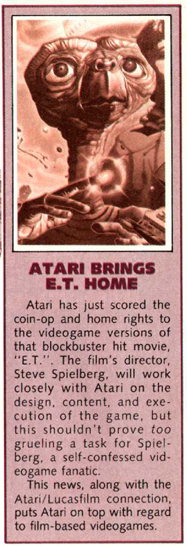
News blurb in the February 1983 issue of Electronic Games (pg.
10). EG missed the mothership on that news.
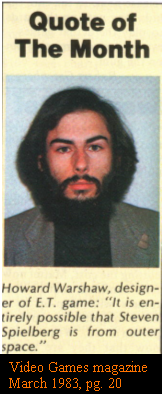 Q: How much involvement did Spielberg have in designing Raiders and E.T.?
Q: How much involvement did Spielberg have in designing Raiders and E.T.?
Howard Scott Warshaw: He would stop in now and then to see how things were going, and we’d have lunch, but that was it. From start-to-finish, it was my concept. I was always interested in doing something original. I never wanted to do coin-op conversions. To me that had already been done, and there was no way to deliver the coin-op
play on the 2600.
For the 1982 June CES, we decided to make a videotape of Raiders to show. I went to a video studio and, seated before a camera with a VCS next to me, played the whole game through, narrating it as I went along. We only did one take…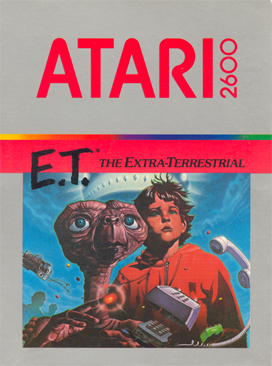
Q: I’d love to see that tape!
Howard Scott Warshaw: I can’t believe I don’t even have it! It was on ¾” tape, and nobody had those players then so I never got a copy. One of my greatest moments at Atari was showing the tape to Spielberg at the CES show. After watching it, the first thing he said was, “You know, it’s just like a movie.”
Q: Were the Raiders and E.T. games a package deal?
Howard Scott Warshaw: No. When the time came to do E.T., Steven liked Raiders so much that he requested I do it.
Q: Raiders really is a terrific adventure game. I never understood how or why that got grouped in with E.T.’s criticism. How was it that you only had 6 weeks to do E.T.?
Howard Scott Warshaw: The problem was the negotiations for the licensing took a long time. The deal was completed in late July and Atari wanted the game out by September 1st in time for the Christmas shopping season (Ed.: The game actually didn't reach shelves until late November/early December. According to the V1N4 issue of Atari Age, manufacturing took 10 weeks.). This allowed about 5 and ½ weeks for development time! Kassar called me directly from a hotel in Monterey, CA where the negotiations were being held, and asked me if I could do it. “Sure…” I said, “…provided we can reach the right agreement!” I spent the next 2 days working up a basic design for the game. On Ray’s request, I flew down to meet with him, Skip Paul (the head legal counsel), Lyle Rains (who was going to do the coin-op version, but it couldn’t be completed in time), and Spielberg. It was exciting to meet with Spielberg again, but at the same time, there was a lot of pressure to get it done.
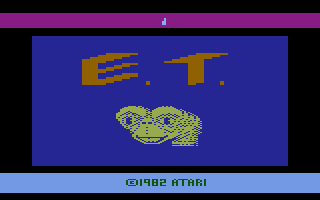 Q: Did you have any help with it?
Q: Did you have any help with it?
Howard Scott Warshaw: I wrote about 6.5K of original code, and got another 1.5K of original graphics from Jerome Domurat, who was a good friend of mine, and a graphics designer at Atari. Someone (possibly Andy Fuchs) gave me the song notes for both the E.T. and Raiders theme music. I did use 1-line rez graphics for E.T. With Raiders, it was going to be a game-play intensive thing, but on E.T., what I was going for was a game with some sentimentality to it. The whole thing with E.T. (the movie) was sentiment.
Q: Of course. You feel for him- he’s lost, and then he becomes sick…
Howard Scott Warshaw: I invented the idea of a 6-sided world that you could “float” around, and use the indicators, but it was very coarse – I was crushed for time. I calculated it out once that I had produced game code (finished, debugged, and documented) at 13 times the industry average! I had a development system at my house and just lived that game for a month. For the time I had, and given the problem I had to solve, I think I did a pretty good job with it.
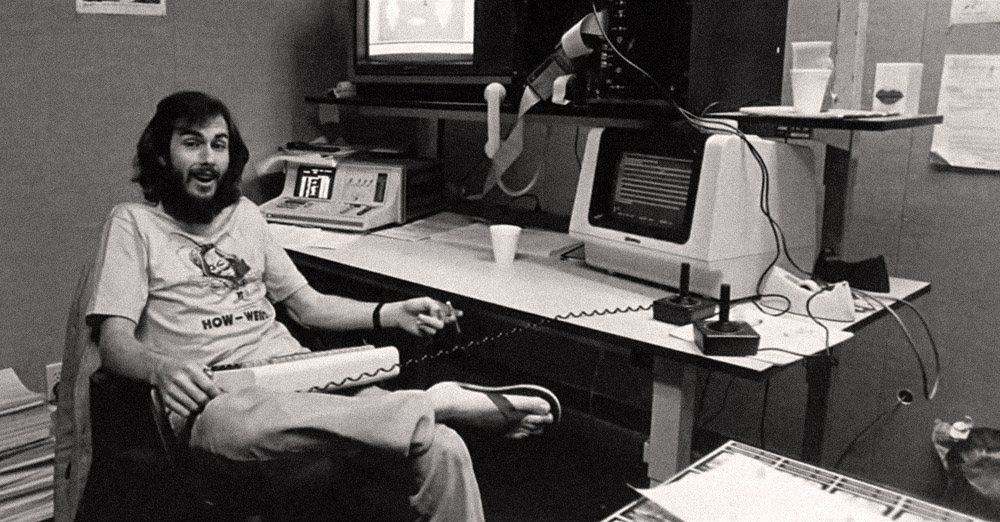
Howard in his office, at his VCS development system (note E.T. on the TV screen), wearing his custom "How-Weird" shirt.
The device behind his left shoulder is an HP 1611A Logic State Analyzer. The black box on the shelf to the right of the monitor was a VCS emulator.
Q: How long did it take for the other 2 games to be programmed?
Howard Scott Warshaw: Yars took about 4 or 5 months, and Raiders took a good 6-7 months to do. I
finished the first version
of Yars around July or August, and from there Atari started an incredible series
of play-tests. By the time the game was released,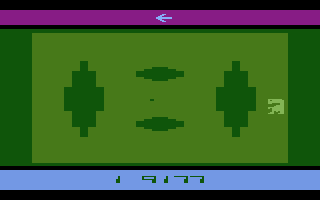 in May 1982, I was well into working on Raiders.
in May 1982, I was well into working on Raiders.
Q: Why was it that, although E.T. was a best-seller, many considered it a failure?
Howard Scott Warshaw: It sold around a million and a half copies, but Atari had over-produced the game, making something like 4 million (Ed.: Internal documents shown in Warshaw's Once Upon Atari reveal over 2.5 million were sold in 1982, with approximately another 1 million in 83-84. See below), and then ended up "dumping" all these carts (onto the marketplace). It’s still the 8th all-time best-selling Atari cart. It probably wouldn’t have onContextMenu="alert('No hotlinking allowed');return false;" sold as many if it weren’t E.T., but then again I would have had more time. All 3 of my games are in the top 20, and they’ve all sold over a million.
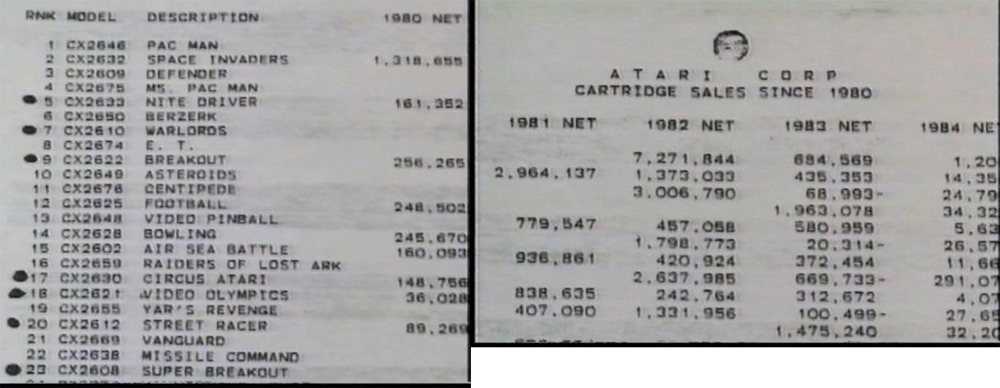
Internal documents shown in "Once Upon Atari" (The Agony & The Ecstasy segment)
Q: Someone once joked that there were more E.T. carts than actual systems!
Howard Scott Warshaw: That may be true! If Atari had made half as many carts they probably would have made a lot more money on it. But they also gave Spielberg a lot of money for the license (Ed.: Reportedly $22 million!). It was a wild experience – I was even flown out to London for the movie's premier there (December 9th, 1982)!
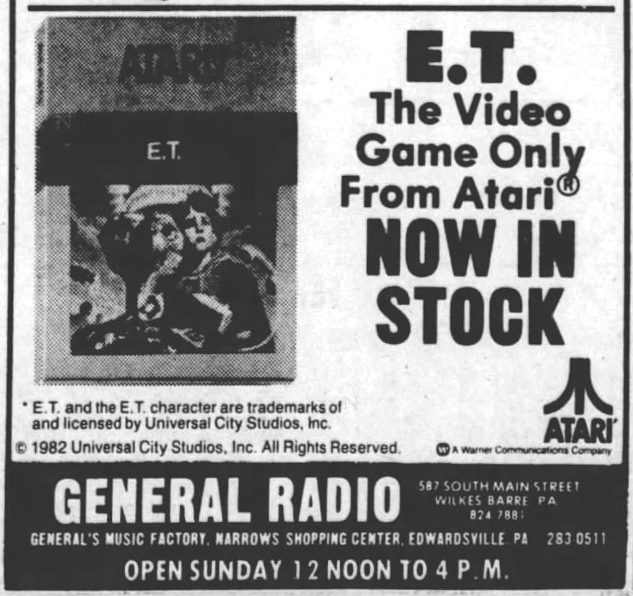
General Radio ad in the
November 19th, 1982 edition of The Citizens' Voice newspaper (pg. 14).
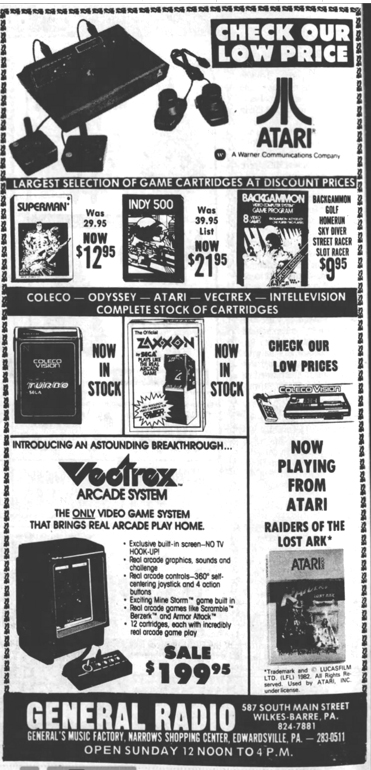
General Radio ad in the
November 25th, 1982 edition of The Citizens' Voice newspaper (pg. 46).
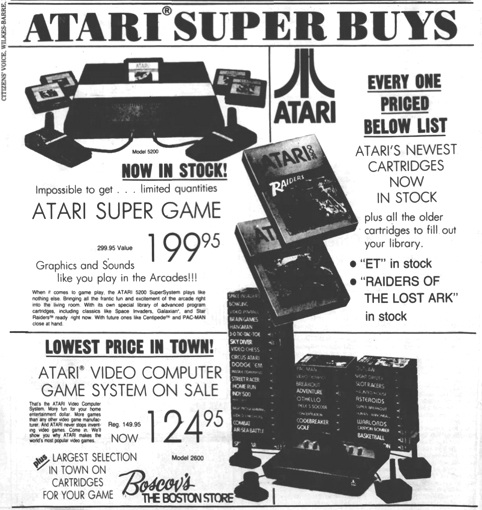
Boscov's ad in the
December 2nd, 1982 edition of The Citizens' Voice newspaper (pg. 92).
Q: I’m truly amazed that you still managed to hide some secrets in there, given the time frame.
Howard Scott Warshaw: The one thing with all my games is that they all contained Easter eggs; in fact, each one of my games contains the characters from the previous ones. That’s the last thing you do, after the game is finished. You’re thinking, “What can I do that’s easy and cheap (memory-wise)?” As a programmer you know every byte of
code, and the best place to check specific registers to trigger it.
In Yars, you have the Ghost of Yars and my initials “HSWWSH”, the meaning of which was meant to lead you to the fact of Yar being Ray and Razak being Kassar. In Raiders, you can find a Yar, which leads you to the initials. With E.T., from inside the wells you can find a Yar, the Indy character, and my initials. The initials “JD” (for Jerome Domurat) also appear on the status bar, which I think is the first time in an Atari cart where a graphics designer was credited with a
signature. I figured since you’re always going into these wells, it would be cool to discover something different there.
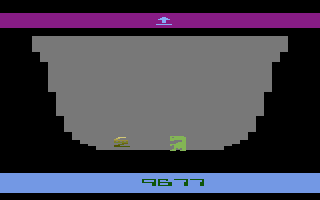 Q: That seemed to be the biggest complaint with the game. It was difficult to control not falling into, or getting out of wells.
Q: That seemed to be the biggest complaint with the game. It was difficult to control not falling into, or getting out of wells.
Howard Scott Warshaw: It was a poor choice on my part, the way I laid out the wells, but once you get to know the game you can avoid it.
Q: I managed to find your eggs in Raiders, but I couldn’t get the E.T. ones.
Howard Scott Warshaw: To find the Yar, first you have to give Elliot exactly 7 Reese’s Pieces, and then you need to find all the phone pieces. The last step is to find and revive the flower. A Yar will appear and fly out of the well. In the next wave, do the same thing and Indy will appear. The 3rd time around you get the initials in the energy counter.
Q: I don’t think anyone has ever seen all of these!
Howard Scott Warshaw: Those were not easy to find. I actually had a much more elaborate method for hiding them in Yars that no one would have ever stumbled upon. I told people about it but they felt it should be easier. As it worked out, I had a little room left (in the program) so I added the method as it is today. But it became the thing that would ruin your game, so you had to avoid it.
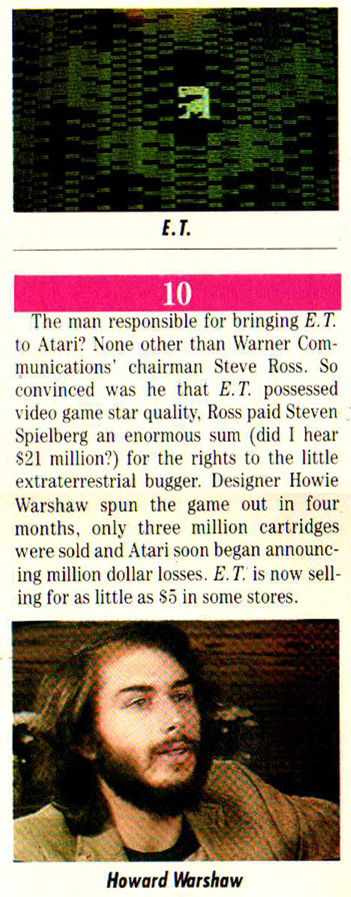
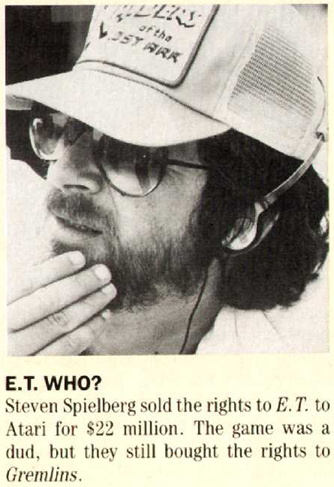
(LEFT)
Article in the February 1984 issue of Computer Games
(pg. 42); (RIGHT)
Article in the January/February 1985 issue of Computer Games (pg. 36).
Q: Even when you weren’t trying, you would still uncover it! I noticed the line is always there, but you had to hit the swirl in mid-air to bring the line out from the side of the screen…
Howard Scott Warshaw: Once you had the full-screen explosion going, if you were on the 3rd “quarter” of the line when the explosion terminated you’d trigger the “ghost”. The way a lot of people played was they’d come off the top after making the shot and end up right about where you had to be. It was poor placement for it.
Q: I also noticed in each of your manuals you hinted at the fact of something hidden in the games.
Howard Scott Warshaw: There were other people who had done Easter eggs before, like Warren Robinett and Rob Fulop, but they were just hiding them – nobody knew about it. We had to fight to put them in there, because Atari perceived them as a threat. I always said, “You should use this. It’s a cheap way of attracting attention, and players love it.” I know, because I like finding them myself!
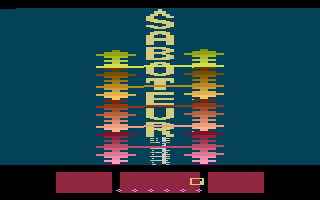
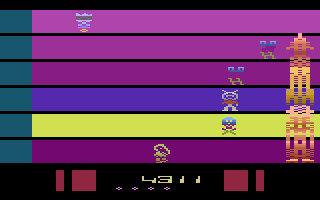
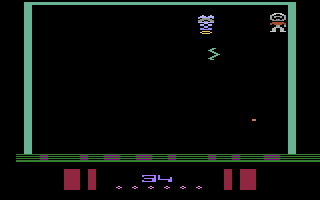
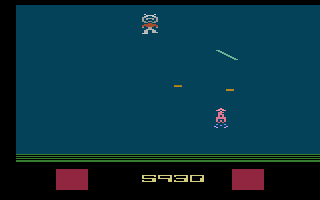
Saboteur prototype (dated 12-20-83)

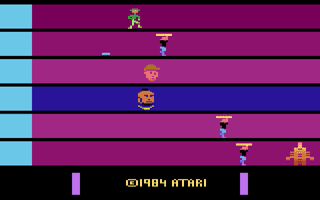
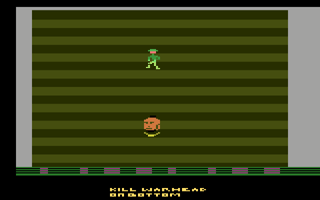
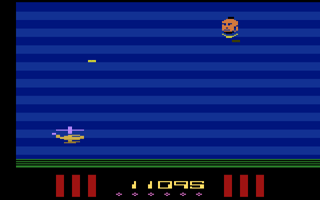
The A-Team prototype (dated 5-8-84)
Q: Besides your 3 releases, were there any others you were working on?
Howard Scott Warshaw: I had pretty much finished a game called Saboteur. The idea for it came to me while I was doing Raiders and E.T. It wasn’t completed to the point where I had my initials in it or anything. There was this big global conspiracy story line to it. I took my Saboteur game and made a version based on The A-Team show. I left before completing it. I had little program routines and things, but those were the only 4 (games) I did. After Jack Tramiel bought Atari, it was not a very attractive place to work.
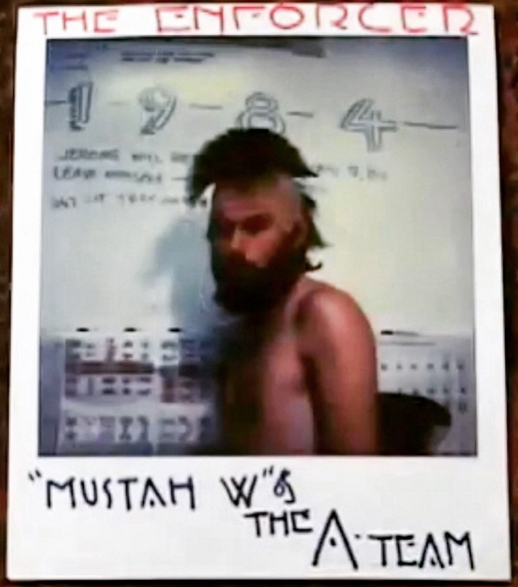
Q: You also worked on a game for the unreleased MindLink controller?
Howard Scott Warshaw: That is true. I designed a game called Mind Maze, and Peter Niday programmed it. It was largely done by some people from the psychic institute. There was a wacky-looking physicist and a guy named Elliott who was reputed to be a genuine psychic. They approached us and wanted us to do a game based on
ESP and they wanted me involved because they said my games were the most “visually generous” of what they had seen.
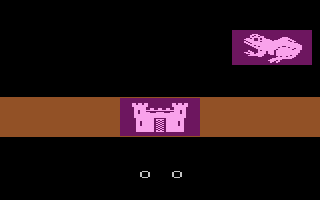
It really never went anywhere since the MindLink controller wasn’t going to pick up brain energy but rather muscle tension in the forehead and the expense of producing and selling a controller for just this wasn’t appealing to Marketing at all. It was fun to be a part of it, though.
Q: There's a certain Atari "museum" website claiming that you had done some preliminary game design programming a Pac-Man-type maze game for a next-gen Atari VCS system called "Sylvia" or the "3200" (that site incorrectly refers to it as the 3600). Is this correct? If so, what do you recall about it?
Howard Scott Warshaw: That report reflects bogosity of the highest order. I never worked on this at all. The 5200 and 7800 were the only other systems we worked on, and I was always a 2600 dude.
Q: Could you see the industry crash coming?
Howard Scott Warshaw: We all could kind of see it, especially with the proliferation of all the other companies. We didn’t think it would crash the way it did, but when it happened, nobody was really that surprised. The industry had gone from 2 billion a year to nothing in a year and a half.
Q: Why was Tramiel initially so anti-gaming?
Howard Scott Warshaw: He was only interested in putting out his computers (the STs) and ignored the gaming half, basically letting everyone go. When he realized that companies wouldn’t rush to develop software for his systems (because of the lack of software for them) and tried to get back into the video game market, it was too late.
Q: But that lack of software was a mistake they repeated with every system put out under Tramiel!
Howard Scott Warshaw: It’s very strange. Companies like Apple and IBM/PC makers go out of their way to attract developers, and make it easy for them to write software for their systems. The only reason to have a computer is to run software!
Q: How do you feel about Atari’s recent demise?
Howard Scott Warshaw: Is it official? There had been rumors circulating…
Q: They’ve merged with JTS – a hard drive manufacturer out of San Jose. The Jaguar development team was laid off. Dave Staugas was supposedly even working on a VCS emulator for the Jag.
Howard Scott Warshaw: Dave Staugas and Rob Zdybel were there when I was. Rob was at Atari for something like 16 years.
Q: That’s unheard of for a game designer!
Howard Scott Warshaw: Rob wasn’t always writing games – he did the operating systems for the STs. He was a very accomplished programmer. Some guys were pure hackers and others were formally-trained programmers, but everybody was very talented. They came from all different backgrounds, and the amazing thing was everyone in that core group of programmers had some other interest they were good at. Atari was one of the most talented work environments I’ve ever been in.
Q: Look at all the 3rd-party developers that were started by former Atari programmers…
Howard Scott Warshaw: And look at all of those who tried! Writing for the VCS was a real technical challenge; it’s one of the most difficult hardware systems to write for that I’ve ever seen. To program a game on it was a game in-and-of itself! There were no bit-mapped graphics – if you wanted to change something on the screen, you had to program it to redraw the entire screen. Even at the height of its popularity, there were still only 50 or 60 people in the world who could do it, and I was very proud to be one of them.
Q: Did you ever consider leaving to form your own company?
Howard Scott Warshaw: Tod Frye and myself were approached by 20th Century Fox to start up our own company. This was after Yars and Pac-Man were out, and Tod flat-out told George Kiss (then Director of Software) we were going to leave. A meeting was called, and 2 days later we were given bonuses, and a royalty program was finally introduced. That was the main reason all those guys left; they received no royalties from their games - some of which made millions. And it would have taken very little on Atari’s part to keep those guys there.
Q: It seems as if Tod Frye was in the same situation you were with E.T.
Howard Scott Warshaw: Tod was given only 4K to write Pac-Man. By the time they offered him 8K to use, the game was nearly completed and he really couldn’t take advantage of it (Edit: Rob Zdybel was Tod Frye's office mate at Atari and claimed as far back as the late 1990s in Howard Scott Warshaw's Once Upon Atari that Frye absolutely asked for 8K during the project. He recently mentioned it again in this June 2016 podcast).
Q: Tod has been claiming for several years now that Atari had a rule against having black backgrounds in any game that wasn't a space game, which is his excuse for not using one with his VCS Pac-Man game. Do recall any such rule?
Howard Scott Warshaw: I don't recall any stipulations about when you could or couldn't have a black background.
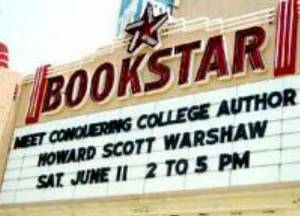
Q: What have you done since leaving Atari?
Howard Scott Warshaw: I took a year off. I became a real estate broker for a while, and then got back into systems programming. Games weren’t really doing anything, and still aren’t. Then I went to Convergent Technology. I planned on going to law school and tool the LSATs, but was then offered a position with a start-up company involving quality-assurance with industrial robotics. I left there for Unisys. While there, I wrote a book about a card game called PAN. After that I wrote a book called “Conquering College”. I took some time off to try to promote it, but only sold a few thousand copies. I went back to work with robotics for a few years. I still feel like I’m just getting started. There’s always something new to learn. I want to do everything!
Q: What’s your latest endeavor?
Howard Scott Warshaw: Recently I went back to school and got a certificate for video production. My first documentary, which was needed to complete my certificate, was on the story of 2 women from the same family, who were Soviet Jews who had immigrated to the U.S. One came in 1920 and the other in 1980. There was about a 60-year difference in the time they made their journeys, but there were these amazing similarities in their stories. I interviewed them separately and then intercut their stories together. It was shown on PBS, which was the 1st time in the history of the school that someone’s final project got aired!
Q: Are you a movie buff?
Howard Scott Warshaw: Definitely! I’ve always been a fan of the movies. Often I’ll rent 4 or 5 at a time. But now when I’m watching, I can break it down and analyze how certain scenes worked or didn’t work. Directing is something I’d really like to do.
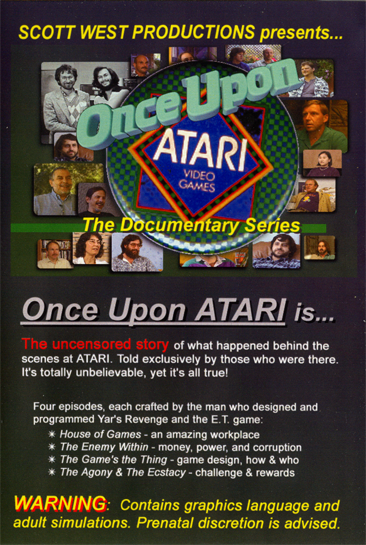
Q: You mentioned before about doing a documentary on Atari. Will you be interviewing other programmers?
Howard Scott Warshaw: Yes. Right now I’ve interviewed about 12 people. It’s going to be about what it was like to be a VCS engineer, back in the early 80s. I don’t think anyone’s really covered that side of it. I’ve read “ZAP!” and a couple other publications on Atari, but that wasn’t the real story of what went on. I hope to complete it in a few months.
Q: Other programmers have told us working for Atari was at best, unrewarding. What’s your opinion?
Howard Scott Warshaw: Very exciting. A lot of interesting things happened. It was a very high-pressure environment, even though we (the programmers) were unconstrained in a sense that we were allowed to come and go as we pleased. There were good and bad times, obviously; it was one thing if your game sold well and everyone liked it, but when there were deadlines and you were stuck on your project… some people literally cracked. They just couldn’t handle it. Luckily I’m one of those people who thrive on pressure!
Q: Ever consider getting back into game programming?
Howard Scott Warshaw: Oh sure. I’ve talked with Electronic Arts, and almost with Sega a few times, but nobody’s really interested in doing something new or original. Today’s games are all multi-media, involving sound people, graphics people, programmers, video producers, and the problem is, they don’t know what to do with me – I can do all of that! Because everything is so “compartmentalized”, there’s no unity of vision, and I think I can offer that. Unfortunately the industry has become very market-driven and as a result there’s very little creative input. (Ed.: Since this interview, Warshaw has worked at 3DO with Tod Frye and a few other ex-Atari programmers).
Q: There’s not too much to choose from. It’s that “assembly line” mentality.
Howard Scott Warshaw: Exactly. And the people who are deciding which products should be released are all Marketing people, who know nothing about games or what players really want. They’re all looking for that big hit, but at the same time they’re afraid to take that risk, and if they can’t see that then they’ll never find it. The process is, “How many people do we need? How much will it cost? Can we manage this project?”. Our main concern back then was, “What would it be like to play this game?”
Q: It’s really unfortunate.
Howard Scott Warshaw: And they think they’re being innovative. There are basically 4 main types now – fighting, sports, driving, and the 1st-person adventure puzzle games. What we called “tweaking” a game back then, they consider a new game today.
Q: Especially fighting games. Years ago you could walk into an arcade and not find 2 games that were really alike.
Howard Scott Warshaw: You look at Defender or Robotron – those were great! Eugene Jarvis was a guy who could make video games. There were games that you would become so totally involved with, you would physically feel exhausted. That to me is the definition of an action game. I might consider putting together some proposals for a Yars 2 or for some of the other ideas I have, and taking it around to other companies, but by-and-large they really don’t want to take a risk with original ideas.
Q: As a result, I’ve become a real pinball fan in the past few years. You can play it once and do fantastic, and the next time get totally thrashed by the machine. You can’t memorize it – it’s completely random.
Howard Scott Warshaw: Pinball is a good example of what makes a great game – a mixture of luck and skill. That’s a very critical aspect. In the long run a more-skilled player will do better, but in the short run anyone should be able to win. There should be some randomness, which offer challenges over the game. When you get to games like Pac-Man or Mortal Kombat where there’s a document-able sequence that you can execute to succeed, to me that’s totally antithetical to what a game should be.
Q: What are some of your favorites?
Howard Scott Warshaw: Definitely Robotron and Defender. Millipede, more so than Centipede. Space Dungeon was cool, as was Tempest. Missile Command on the 2600 was a great game. Adventure was a profound game in that, at the time the only adventure games were text-based, and Warren showed what computers were really all about. I was never a fan of Pong, but I liked Breakout. And I hate to say it, but I like Yars’ Revenge!
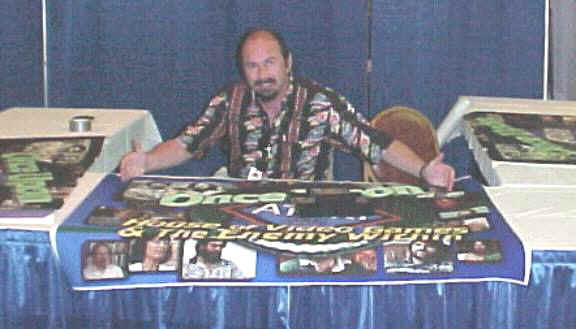
Howard’s booth at the 2000 Classic Gaming Expo, selling copies of his ‘Once Upon Atari’ documentary.
To learn more about Howard and his excellent documentary, Once Upon Atari, check out his website at: http://www.onceuponatari.com/
Also, see my Archives section, where you'll find PDF files for the manuals for all 3 games, the Yars' Revenge comic book, the hints and solution sheets for Raiders of the Lost Ark, and Consumer Guide's "How To Win At E.T. The Video Game" books.
See my Easter egg section for more information on how to find the eggs in Yars' Revenge, Raiders of the Lost Ark, and E.T. the Extra-Terrestrial, plus a wealth of information you won't find anywhere else!
Here's some videos of the Easter eggs in Atari VCS/2600 Yars' Revenge and Raiders of the Lost Ark:
Here's Atari's TV commercials for Yars' Revenge:
Raiders of the Lost Ark:
and E.T. the Extra-Terrestrial:
Here's an episode of Bob Sarlatte's American Hot Stuff TV show featuring Howard Scott Warshaw and the Atari VCS/2600 games E.T. the Extra-Terrestrial, Raiders of the Lost Ark, and SwordQuest Earthworld.
Here's a 5-part video of Howard's keynote I filmed at the Electronicon show that was held at the Philadelphia Airport Hilton in Philadelphia, PA on June 28th, 1997. The show was the 2nd of its kind (the first being the 1996 RGVC-Con in Dayton, Ohio):
Finally, here's Howard's keynotes from the 2014 Classic Gaming Expo and the 2015 Game Developer's Conference:
| GAME | SYSTEM | COMPANY | STATUS |
| Yars' Revenge | Atari VCS/2600 | Atari | released |
| Yarian Olympics | Atari VCS/2600 | Atari | not completed |
| Raiders of the Lost Ark | Atari VCS/2600 | Atari | released |
| E.T. the Extra-Terrestrial | Atari VCS/2600 | Atari | released |
| Mind Maze (designed) | Atari VCS/2600 | Atari | not completed |
| Saboteur | Atari VCS/2600 | Atari | not completed |